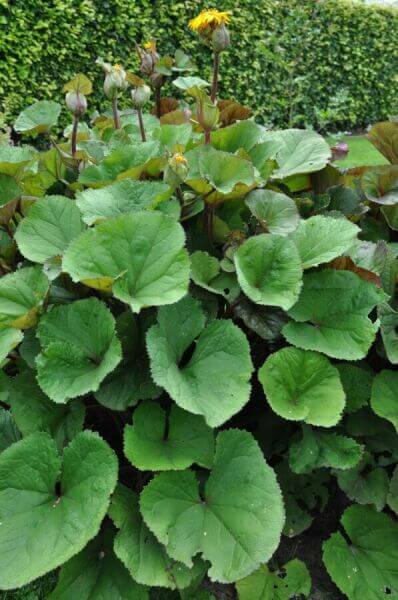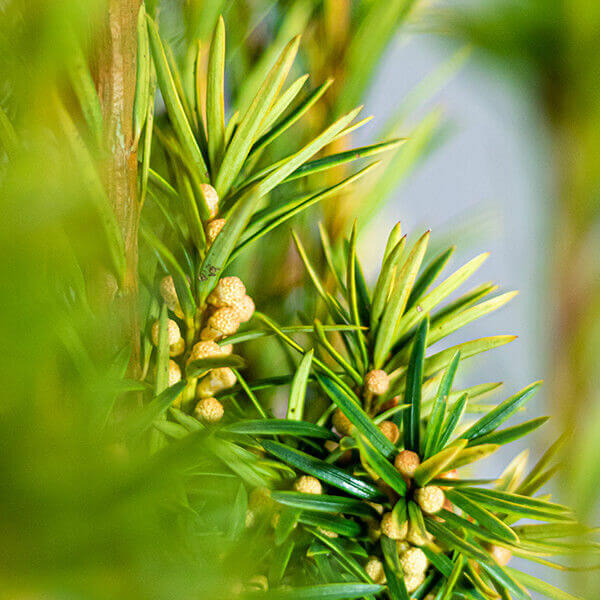Hedge Plants For Ornamental Hedges
Boost your garden's attraction with rich hedge ranges such as Yew (Taxus), Thuja, Laurel, Photinia, and Bamboo, commemorated for their structural integrity and environmental advantages.
Yew and Thuja supply evergreen coverage and winter season resilience, while Laurel provides rapid development and broad, aromatic leaves.
Photinia adds seasonal appeal with its lively red foliage, and Bamboo lends a low-maintenance, peaceful atmosphere.
These hedges improve air quality, minimize sound, and create tranquil, private areas.
Proper planting, spacing, and maintenance guarantee energetic growth and environmental consistency.
Check out how these lush varieties can elevate your garden's appeal and wellness.
Key Takeaways
Transform Your Garden With Lush Hedge Varieties
- Select Yew for its thick, evergreen development and unparalleled longevity.
- Select Laurel for its quick development and broad leaves, ensuring quick privacy.
- Choose Photinia for its dynamic seasonal foliage, which turns a striking dark red.
- Use Bamboo for a low-maintenance, winter-hardy hedge with visual appeal.
- Area plants 2-3 per meter and prune frequently for optimum development and health.
Popular Hedge Plants
When transforming a garden with lush hedge varieties, it's vital to consider popular hedge plants such as Yew, Thuja, Laurel, and Photinia due to their distinct qualities and advantages.
Yew (Taxus) is extremely esteemed for its durability and dense, green growth, making it a prime option for sustaining landscapes.
Thuja is kept in mind for its evergreen foliage and robust winter season strength.
Photinia includes seasonal vibrancy with red leaves that darken with time, developing vibrant visual appeal.
Laurel uses quick development and aromatic, broad leaves, perfect for fast personal privacy.
Furthermore, Bamboo is an outstanding choice for ambiance, offering a low-maintenance, winter-hardy option that boosts the garden's visual with its sophisticated, swaying walking sticks.
These selections cater to a variety of horticultural requirements and choices.
Benefits of Garden Hedges
Garden hedges offer a multitude of advantages, making them an important addition to any landscape. These natural barriers are affordable to implement and supply substantial wind security, enhancing air circulation and adding to noise reduction. The thick foliage of hedges like Thuja and Beech ensures personal privacy by blocking visibility, developing a remote and serene environment.
Hedges likewise play an important role in microclimate guideline, providing a steady environment that promotes plant development and lessens temperature variations. Their elaborate leaf structures filter pollutants, enhancing air quality and contributing to a much healthier garden ecosystem.
Furthermore, hedges master noise decrease, taking in and deflecting acoustic waves to lower ambient sound levels. This dual performance of providing both acoustic and visual privacy improves the total tranquility and visual appeal of any garden.
Planting and Maintenance Tips
For an effective hedge, meticulous preparation of the planting area is vital. Ensure the soil has appropriate pH and drain to support strong root development.
Area the plants properly for the chosen types. Water the hedge frequently during its initial development phase, adjusting as needed with seasonal modifications.
Carry out a systematic insect control and illness avoidance technique, utilizing chemical or organic treatments when required. Frequently check for aphids, termites, and fungal infections.
Apply mulch to retain moisture and suppress weeds. Seasonal pruning promotes dense development and air circulation, important for plant health.
Following these standards will assist you cultivate a lively, properly maintained hedge that enhances the beauty of your garden.
Spacing and Trimming Guidelines
Spacing and Trimming Guidelines
Appropriate spacing and trimming are crucial for cultivating healthy, visually appealing hedges. Sufficient spacing guarantees each plant receives adequate nutrients, light, and airflow.
Follow these guidelines for optimal hedge maintenance:
- Spacing: Position hedge plants 2-3 plants per meter to encourage robust growth.
- Pruning Techniques: Routine pruning is important for keeping preferred hedge height and shape. Trim brand-new development in summer and cut down older wood throughout winter season.
- Seasonal Care: Change trimming schedules and techniques according to seasonal requirements to make sure plant health.
- Hedge Height: Routinely monitor and cut to keep the preferred hedge height and accomplish consistent looks.
Complying with these steps will guarantee your hedge thrives, boosting both the appeal and functionality of your garden.
Picking the Right Hedge
Selecting the Right Hedge
Picking the appropriate hedge includes evaluating elements such as fully grown height, foliage density, and environmental durability. Effective hedge plant selection needs understanding each types' development characteristics and site-specific versatility.
For instance, Yew (Taxus) uses excellent longevity and thick growth, while Thuja is noteworthy for its winter season strength. Additionally, considering maintenance requirements is important; fast-growing types like Laurel or Privet demand regular trimming, whereas low-maintenance alternatives like Bamboo or Ivy may be more effective for those seeking minimal upkeep.
Environmental elements such as soil type, light accessibility, and moisture conditions must likewise direct the choice procedure. This mindful technique makes sure the picked hedges will thrive, providing both visual and practical benefits to the garden landscape.
Delivery and Planting Guidance
To ensure your hedge plants thrive, they should be provided by specialized carriers and planted without delay upon arrival.
Follow these necessary actions for successful planting:
- Soil Preparation: Enrich the soil with raw material to enhance drain and nutrient content.
- Planting Depth: Create a trench two times the width and equivalent to the depth of the root ball.
- Watering Methods: Water thoroughly after planting, keeping the soil regularly damp but not filled.
- Mulching: Use a layer of mulch to retain wetness and reduce weeds.
Client Support and Service
Offered the important role of prompt support in horticultural pursuits, our consumer assistance team is readily available six days a week through telephone, e-mail, and social media to use skilled recommendations and swiftly resolve any concerns. Their commitment to quick action times guarantees customer fulfillment by dealing with queries connected to plant health, ideal planting approaches, and maintenance schedules.

Telephone
Within 48 hours
6 days a week
This comprehensive assistance system, strengthened by a stellar 9.3/ 10 consumer score, highlights our commitment to enhancing the gardening experience for every customer.
Often Asked Questions
The Length Of Time Does It Take for Hedge Plants to Develop?
Hedge plants typically need one to three years to end up being completely established, with the precise duration differing by species and growing conditions.
Reliable care during this critical duration is important for robust development. Consistent watering, watchful weed control, and appropriate fertilizer application are critical in promoting strong root advancement.
For example, fast-growing species like Laurel might establish quicker, while slower-growing varieties such as Yew may take longer. Thorough maintenance accelerates the facility process, resulting in healthy and thick hedges.
What Are the very best Hedge Plants for Personal Privacy?
The concern of the very best hedge plants for privacy involves examining evergreen and deciduous options.
Evergreen hedges like Thuja, Laurel, and Cypress offer year-round protection, making sure continuous privacy.
In contrast, deciduous hedges such as Beech provide seasonal personal privacy, shedding leaves in cooler months.
Secret maintenance suggestions for privacy hedges include routine cutting, fertilizing in spring, and correct spacing-- normally 2 to 3 plants per meter.
Additionally, consistent watering and diligent weed elimination are essential for promoting healthy, thick development.
Can Hedge Plants Attract Wildlife to My Garden?
Yes, hedge plants can attract wildlife to your garden by providing important benefits like shelter, food, and nesting sites, consequently boosting regional biodiversity. Yew, holly, and laurel are excellent for attracting birds, while ivy supports a variety of pests.
Nevertheless, it's crucial to keep in mind that there are some disadvantages, such as increased maintenance to manage insects and routine maintenance. Carefully picking and preserving hedge varieties can assist balance these advantages and disadvantages, eventually promoting a lively and sustainable environment in your garden.
Are There Any Blooming Hedge Plants Available?
Yes, there are flowering hedge plants available that can improve the appeal of your garden.
For example, Elaeagnus, likewise known as Olive Willow, produces fragrant white flowers in the fall, including a touch of elegance.
Photinia, another popular choice, showcases vibrant red leaves that develop into an abundant green, creating a dynamic visual result throughout the seasons.
To ensure these plants prosper, it's vital to practice proper pruning techniques and seasonal maintenance, such as cutting brand-new development in the summer season and cutting back in the winter.
These steps will assist keep the health and visual appeal of your blooming hedges.
How Do I Prevent Pests in My Hedge Plants?
To prevent insects in hedge plants, utilize natural insect control techniques and keep correct hedge care. Present helpful pests like ladybugs, which prey on harmful pests, to create a balanced ecosystem.
Regularly inspect your hedges read more for indications of problem and promptly remove any affected parts to prevent the spread. Ensure the health of your hedges by using well balanced fertilizers and supplying appropriate water.
Make use of mulching to keep soil wetness and appropriate spacing to decrease plant stress and promote robust development. These practices jointly assist in reducing pest issues and keeping a healthy hedge.
Conclusion
In essence, picking the best hedge varieties such as Yew, Thuja, and Laurel can transform any garden into a tranquil sanctuary. These plants offer year-round greenery, enhance visual appeal, and deal practical benefits like sound decrease and wind protection.
Proper planting strategies, accurate spacing, consistent watering, and seasonal cutting are important for optimal development.
Trusted delivery services and expert consumer support ensure a smooth experience from purchase to planting, making it simpler than ever to raise your outdoor area.
Garden hedges provide a wide range of benefits, making them an important addition to any landscape. These natural barriers are cost-efficient to execute and provide substantial wind security, improving air flow and contributing to noise reduction. The thick foliage of hedges like Thuja and Beech guarantees privacy by blocking exposure, creating a tranquil and remote environment.

Pruning Methods: Routine pruning is vital for preserving preferred hedge height and shape. Trim new growth in summer and cut back older wood throughout winter season.